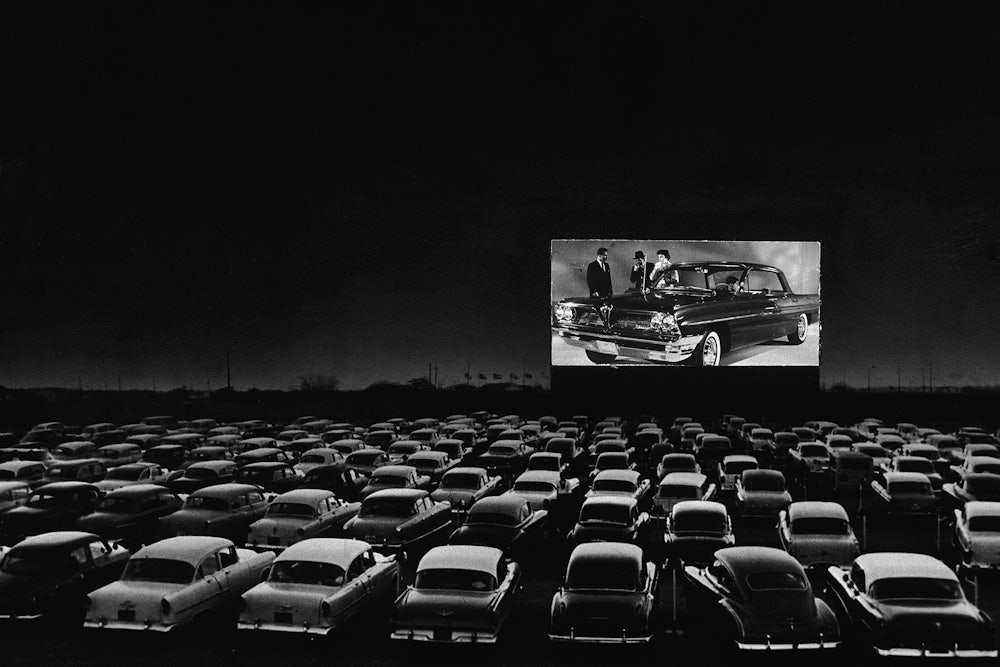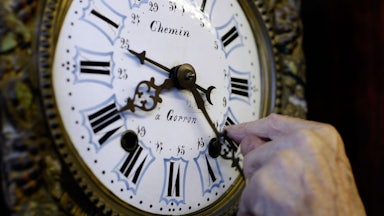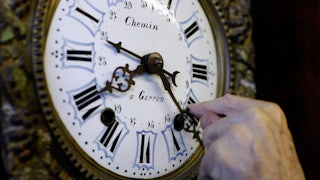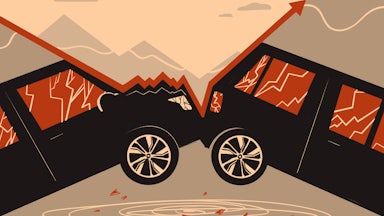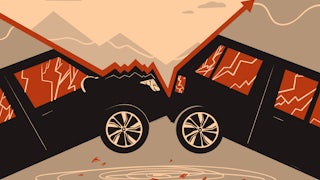The Senate’s vote earlier this week to make daylight saving time permanent is a great window into how American politics really works. For one, it was semi-unintentional: Senators only approved the measure by unanimous consent; some said after the fact that they had no idea what was being voted on and that they would have objected if they had known (it only takes one objection to negate unanimous consent). Ending the biannual clock-changing is fairly popular among voters. But this is the United States Senate, and popular things don’t get through the chamber except by accident. (The House has yet to approve the measure, so it may yet not become law.)
Daylight saving time itself is a monument to humanity’s hubris. Since Earth’s axis is tilted relative to the Sun, the Northern Hemisphere gets more sunlight in the summer and less sunlight in the winter. Rather than accept this fact and take appropriate precautions, Congress forces Americans to reset our clocks twice a year. The result is massive disruptions to sleep cycles and circadian rhythms, with all sorts of harmful downstream effects on our health, our productivity, and our safety. But what really sticks out is that the daylight saving debate is, to some degree, a proxy fight over cars and the role they play in American life.
The automobile is perhaps the quintessential American invention: a pillar of the national economy in the twentieth and twenty-first centuries, a cultural symbol of freedom and self-reliance, and an inescapable feature of everyday life. A healthy amount of the DST debate isn’t really about clocks at all. It is really about cars, a feature of our society so ubiquitous that we often don’t even realize when we’re talking about them.
What do cars have to do with daylight saving time? For one, they make it more dangerous. In 2020, researchers found that car crashes rose by an average of 6 percent in the week after clocks sprang forward each year. It turns out that disrupting Americans’ sleep habits en masse and then asking them to operate heavy machinery at high speeds is not conducive to public safety. Car safety is also often invoked to oppose changes to the current system: Some have reasoned that effectively forcing Americans to drive more hours in darkness could also be dangerous.
Fear of increased car crashes helped quash an experiment to end daylight saving time in the 1970s. Americans put up with permanent DST during World War II as a fuel-saving measure in wartime. They were less cooperative in 1973, after OPEC instituted an oil embargo of the U.S. and its allies for backing Israel in the Yom Kippur War. As one of many measures rolled out by the Nixon administration to alleviate fuel shortages, Congress temporarily made daylight saving time permanent for two years starting that December. By the following January, this meant that for some Americans, the sun wouldn’t be rising until nearly 8:30 in the morning.
Washingtonian’s Andrew Beaujon, who wrote earlier this week about this brief experiment, noted that the backlash fomented around the effects of the change on young schoolkids. “The early-morning darkness quickly proved dangerous for children: A 6-year-old Alexandria girl was struck by a car on her way to Polk Elementary School on January 7; the accident broke her leg,” he recounted. “Two Prince George’s County students were hurt in February. In the weeks after the change, eight Florida kids were killed in traffic accidents. Florida’s governor, Reubin Askew, asked for Congress to repeal the measure.” Congress did as the public soured on permanent DST in general, returning us to the twice-yearly time shift ahead of schedule in October 1974.
It would be more accurate to say, of course, that the cars were more dangerous for those children than the darkness itself. Pedestrian deaths are a staple of American life even without the changes in darkness and light. “In typical sprawling cities, you’re often lucky to even find a sidewalk,” Ryan Cooper, noted in a 2019 column for The Week on “car supremacy” and its effects. “As a result, 5,977 American pedestrians and 783 cyclists were killed in 2017, overwhelmingly because they were hit by a car—particularly America’s beloved SUVs, which are 2–3 times more deadly when they run someone over.” All too often, that blame falls on the pedestrian instead of a culture and a legal system that prioritizes drivers above all else. School districts also could have solved this problem by starting school later in the day, which is something they should be doing anyway.
I started thinking about our relationship with cars more often in the early days of the Covid-19 pandemic. Some commentators initially downplayed the virus’s spread and impact by noting that it had killed far fewer Americans than die each year in car crashes—more than 41,000 deaths in 2020 alone, which was itself a 13 percent jump from the previous year. This talking point rapidly fell out of favor as Covid losses eclipsed those by cars by many orders of magnitude, with the U.S. toll slowly approaching one million deaths. The argument was still striking not just for its blasé approach to the pandemic but for what it said about how many “normal” deaths most Americans are willing to accept and how, exactly, they’d come to accept them.
I say “willing to accept” not just because many Americans have made peace with the risk of vehicular death as part of everyday life, but because some actively resist efforts to curb it. In August 2020, Cooper observed on Twitter that sales of modern pickup trucks, whose designs are substantially more deadly for pedestrians and other drivers than past iterations, are going up. None other than Texas Senator Ted Cruz quote-tweeted Cooper’s observation and added, “blue check-marks are afraid of pick-up trucks.” Even by the standards of modern American political discourse, there is something ghoulish about trying to turn pedestrian deaths from car crashes into a culture-war meme.
That trend may only accelerate in the years and decades to come. Conservative pundits, for instance, widely derided Secretary of Transportation Pete Buttigieg earlier this month for pointing out that buying an electric vehicle would be one way to avoid high gas prices, a correct claim that nonetheless might not be salient or helpful for most Americans. With Democrats increasingly sorting into major cities and Republicans increasingly flocking to suburban and rural areas, the geographic fissures in American politics may turn American car culture into a partisan issue. An early harbinger of this potential shift was the recent bipartisan infrastructure bill, where Republicans and Democrats fought over whether more funds would go to traditional highway and bridge construction or greener mass transit initiatives. (Guess who won.)
That fight is worth having. Cars are the chief driver of many societal ills, whether it be the destruction of major cities, the atomization of communities into suburban wastelands, the stifling of public transportation within and between urban areas, the public health consequences of inhaling all that exhaust, and the existential threats that cars pose for the climate. Leaded gasoline alone may have shaved off a few I.Q. points for half of all American adults who grew up in the mid-to-late twentieth century. The U.S., from the postwar 1950s on, has been built for cars, perhaps even more so than it is built for human beings.
Car hegemony persists even now, in part because so many Americans associate cars with independence and self-reliance. But nothing benefits the reign of the automobile over us all more than simple inertia—we’ve accepted that our built environment is designed for the benefit of cars so decisively that we’ve forgotten that we built that environment, through policy choices that may no longer make the sense they once did. That it’s easier to debate how to bend time to our will than it is to take back even a small parcel of the territory that’s been given to cars says it all.
